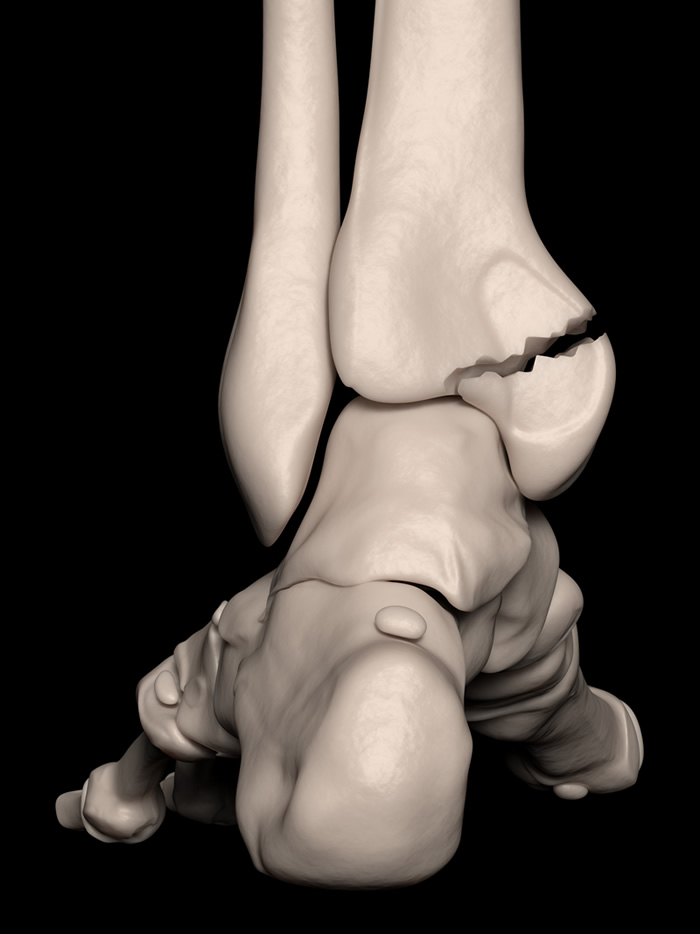
Ankle Fractures
An ankle fracture is a break of one or more of the bones that make up the ankle joint. The ankle is made up of 3 bones, namely the tibia, fibula and talus.
Incidence
Ankle fractures can occur due to a range of accidents, such as falls, sports injuries, motor vehicle collisions, or missteps. The severity of the fracture can vary widely, from minor cracks in the bone to more severe breaks that displace bone fragments.
The incidence is highest in elderly women over the age of 65, but importantly ankle fractures are not considered as fragility fractures.
They are the fourth most common fracture in adults.
Types
- Types of ankle fractures include lateral malleolus, medial malleolus, posterior malleolus, bimalleolar, and trimalleolar fractures
- Simple or Multiple bones fracture
- Undisplaced, displaced, or open fracture
- Associated with dislocation
- Talus fractures
Symptoms
Common symptoms of an ankle fracture include pain, swelling, bruising, and difficulty bearing weight on the affected leg. In severe cases, the ankle might appear misaligned or deformed.
Diagnosis
- Physical Examination
- X Ray
- CT Scan
- MRI
Treatment
The broad goals of treating ankle fractures are restoring the ankle joint to normal alignment, healing the fracture, and preventing arthritis.
Stable fractures might get treatment with non-operative measures (splinting, casting, and/or walking boot).
Unstable fractures require surgery; Open Reduction and internal fixation (ORIF), which is usually performed with metal hardware like plate, screws, wires and mostly a combination of all the above. This holds the bones in place while the natural healing process occurs. Few implants might need removal whereas not all hardware needs to be taken out after healing.
Rehabilitation
Recovery from an ankle fracture can be a gradual process, often requiring several weeks to months. During the healing phase, patients are advised to avoid putting weight on the affected ankle. Physical therapy plays a vital role in rehabilitation, helping restore strength, flexibility, and range of motion to the ankle joint. A gradual return to weight-bearing activities is typically guided by healthcare professionals to prevent re-injury.
The final recovery and prognosis depends on type of injury – generally road traffic accidents will have greater magnitude of injury as compared to slip and fall from stairs. Number of bones fractured – a single malleolus fracture will recover faster than a bimalleolar or a trimalleolar fracture although all have good final post-operative outcomes. Talus fractures have the worst prognosis. Time between injury and surgery is also an important consideration to final outcome as those operated after 3 weeks of injury usually have poorer outcomes.
Conclusion
While accidents can't always be avoided, some precautions can reduce the risk of ankle fractures. Wearing appropriate footwear that provides support and stability during physical activities, maintaining a safe environment, and practicing proper techniques in sports and daily activities can all contribute to preventing ankle injuries.
In conclusion, ankle fractures can significantly impact daily life and mobility, making timely and accurate diagnosis and treatment essential. Understanding the causes, types, symptoms, and available treatment options empowers individuals to take proactive steps in their recovery journey. With proper medical care, patience, and commitment to rehabilitation, individuals can regain functionality and return to their active lifestyles after an ankle fracture.
To know more kindly contact the best orthopaedic surgeon Dr. Rahul Modi for further queries.
This surgery is frequently performed by the best orthopaedic surgeon Dr. Rahul Modi for treating Ankle Fractures.